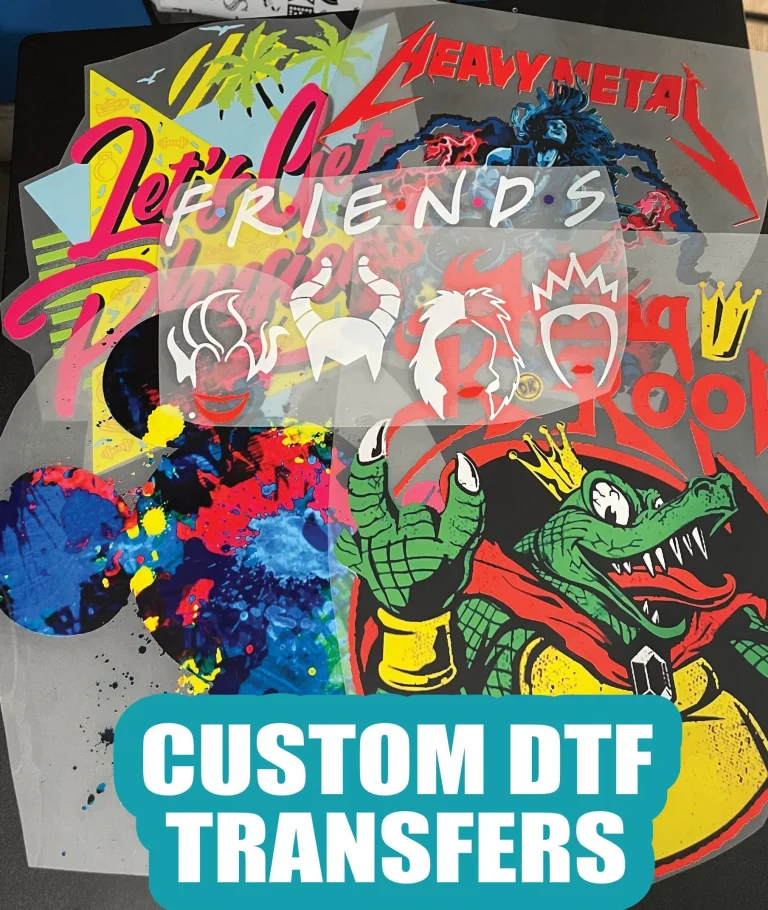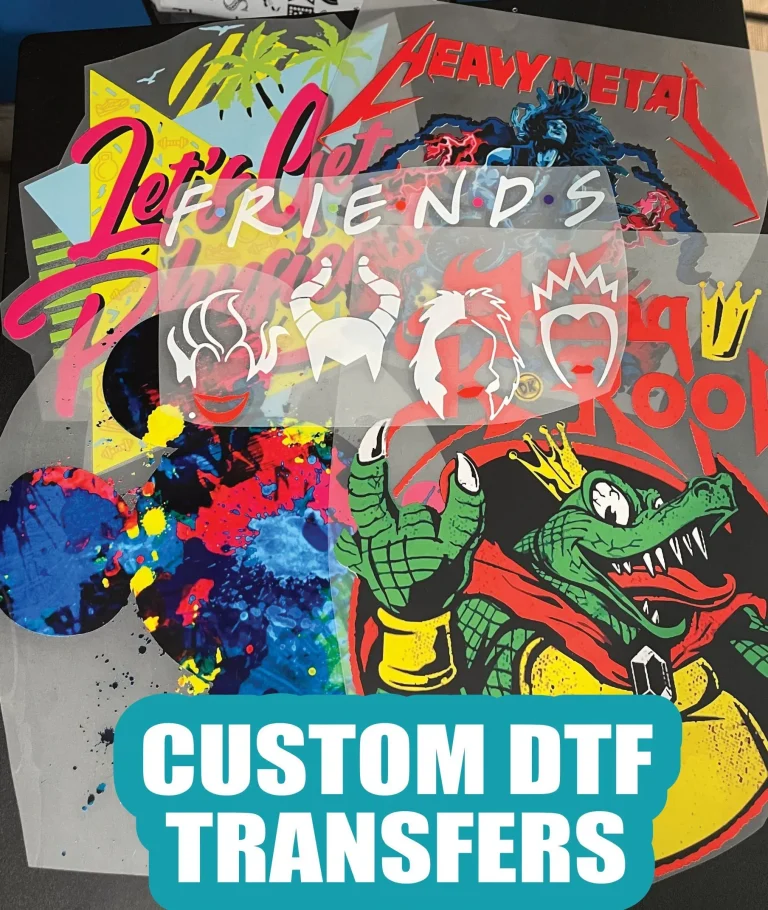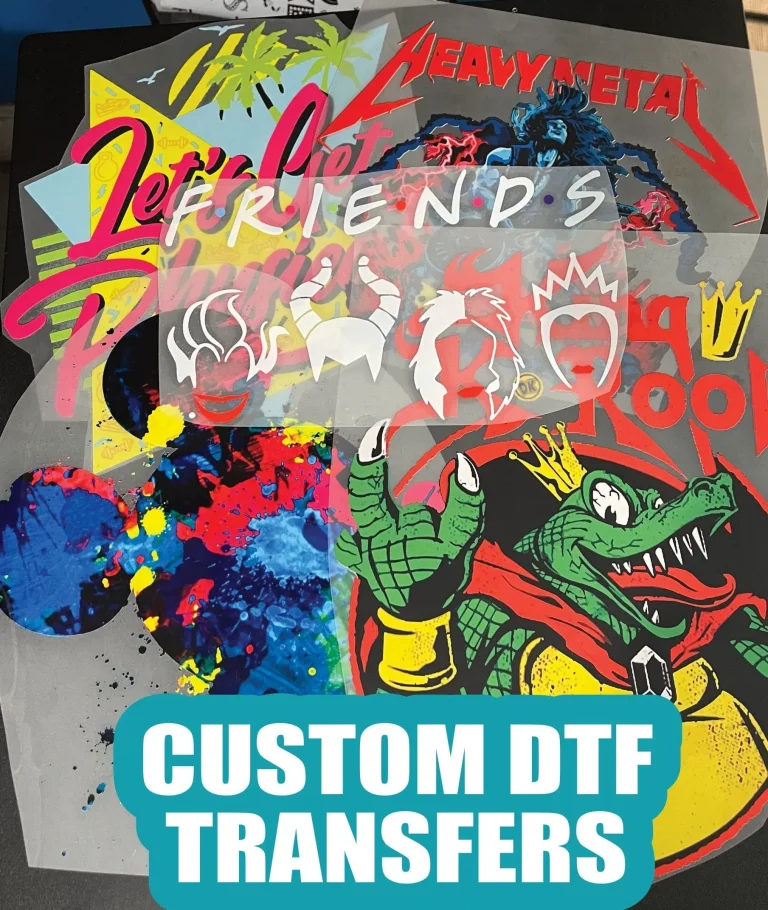UV DTF Gangheet: From Concept to Creation in Design
UV DTF Gangheet represents a revolutionary advancement in printing technology, combining the precision of UV printing with the versatility of Direct to Film printing. This innovative method transforms the way designers approach print design, offering vibrant colors and exceptional durability for a wide range of materials. As a leader in sustainable printing practices, UV DTF Gangheet caters to the growing demand for eco-friendly custom printing solutions across various industries. In this exploration, we will delve into the multifaceted advantages of UV DTF printing, emphasizing how this technique enhances creativity and efficiency in the design process. Join us as we uncover the capabilities of UV DTF Gangheet and its impact on the future of print production.
Introducing the concept of UV DTF printing, also known as Direct to Film technology integrated with UV curing processes, opens a new chapter in the world of creative expression. This printing technique allows for high-resolution, colorful outputs on diverse substrates, appealing to a variety of artistic fields, from fashion design to promotional material production. As designers strive for unique and personalized custom printing solutions, the reliability and environmental friendliness of UV DTF practices become increasingly vital. This post will guide you through the nuances of utilizing these cutting-edge technologies, focusing on the seamless transition from initial concept to final creation. As the world of print design evolves, understanding the potential of UV DTF printing can empower creators to push the boundaries of their craft.
Exploring the Versatility of UV DTF Technology
UV DTF technology exemplifies versatility in modern printing, allowing designs to be applied to a myriad of surfaces, including textiles, plastics, metals, and wood. This adaptability opens doors for various industries, such as fashion, signage, and home decor, enabling endless creative possibilities. Designers are increasingly utilizing this technology to create unique products that reflect individual styles and preferences, pushing the boundaries of conventional print design.
Furthermore, the ability to transfer vibrant colors and intricate patterns makes UV DTF an appealing choice for artists and brands looking to stand out. The integration of this technology within design practices not only enhances visual appeal but also caters to a market increasingly driven by personalization and custom printing solutions. As consumers seek unique and tailored products, UV DTF’s versatility becomes pivotal in meeting these demands.
The Importance of Sustainability in UV DTF Printing
Sustainability has become a crucial consideration in the printing industry, and UV DTF is no exception. Many manufacturers are now focusing on developing eco-friendly UV inks that minimize environmental impact, appealing to a growing demographic of environmentally conscious consumers. This shift towards sustainable printing practices not only helps protect our planet but also positions brands as responsible and forward-thinking within the market.
Incorporating sustainable practices into the UV DTF printing process can also enhance a brand’s reputation and appeal. By utilizing materials that are environmentally friendly while still offering high-quality vibrant prints, businesses can align their operations with consumer values. This sustainable approach is becoming a key component in the overall strategy for brands eager to lead the way in responsible design and manufacturing.
The Creative Process: From Concept to Design
The design process for UV DTF printing begins with conceptualization, where understanding the target audience is vital. Designers must consider their audience’s preferences, likes, and cultural influences, which lays the foundation for effective print design. This stage is instrumental in determining the color palette and material selection, ensuring that the final product resonates with its intended market.
Following conceptualization, the design implementation phase allows for creativity to flourish. Using advanced design software, designers can create detailed digital layouts, specifying every aspect of the print, from graphics and images to typography and layout. This meticulous planning guarantees that the final print not only meets the initial concept but also captivates the audience upon realization.
Technological Advancements in UV DTF Printing
Technological advancements play a significant role in optimizing the UV DTF printing process. The use of state-of-the-art printers enhances print quality and durability, allowing for the application of intricate designs with exceptional vibrancy. The integration of automated processes into the production line is particularly transformative, as it reduces turnaround time and boosts overall output efficiency.
Additionally, innovations in curing techniques, such as UV light applications, ensure that colors remain vivid and true to design after printing. These advancements not only improve the resilience of prints against fading and scratching but also enable designers to experiment with new materials and creative ideas. As the industry evolves, the ongoing improvements to UV DTF technology will continue to inspire fresh ideas and groundbreaking design solutions.
Customization Trends in UV DTF Printing
The trend toward customization is reshaping the landscape of UV DTF printing. As consumers increasingly demand personalized products, brands are leveraging this technology to offer unique designs tailored specifically to individual preferences. Personalized items, whether in fashion or promotional products, enable businesses to connect more deeply with their customers, fostering brand loyalty and engagement.
Moreover, the capacity for on-demand printing with UV DTF technology means that businesses can quickly respond to consumer trends and custom requests, minimizing waste and optimizing production. This agility not only satisfies customer desires for uniqueness but also supports sustainable practices, as brands can adopt a leaner approach to production without compromising quality.
Future Prospects of UV DTF Printing
The future of UV DTF printing looks promising as industries increasingly adapt to technological advancements. With a growing emphasis on creativity and quality, brands that adopt UV DTF early can distinguish themselves in a competitive market. The pursuit of innovation will likely see UV DTF expanding into new sectors beyond its current applications, thereby inspiring a wider range of creative solutions.
As the capabilities of UV DTF technology continue to evolve, designers will find new ways to integrate this method into their workflows, enhancing the overall aesthetic and functional quality of their products. The potential for growth in this domain suggests that businesses embracing UV DTF will not only enhance their design offerings but also establish themselves as market leaders in quality and customer satisfaction.
Frequently Asked Questions
What is UV DTF Gangheet and how does it relate to UV printing technology?
UV DTF Gangheet is an advanced printing method that utilizes UV DTF (Direct to Film) technology to apply vibrant prints on various materials. This innovative process combines high-quality UV printing with the durability of DTF, providing creative professionals with a sustainable and versatile solution for their design needs.
How does the Direct to Film printing method work in the context of UV DTF Gangheet?
In the context of UV DTF Gangheet, the Direct to Film printing method involves printing a design onto a special film using UV inks. This process ensures that colors are vivid and details are sharp. The film is then cured under UV light for durability and transferred to the desired material, making it an ideal choice for custom printing solutions.
What are the sustainability benefits of using UV DTF Gangheet in print design?
Using UV DTF Gangheet aligns with sustainable printing practices as it incorporates eco-friendly UV inks and minimizes waste. The durability of UV prints also means longer-lasting products, which reduces the need for frequent replacements and contributes to a more sustainable design approach.
Can UV DTF Gangheet be used on various materials for custom printing?
Yes, UV DTF Gangheet is incredibly versatile and can be applied to a wide range of materials, including textiles, plastics, metals, and wood. This flexibility allows designers to create customized products across diverse industries, such as fashion, advertising, and home decor.
What makes UV DTF printing technology a game-changer in the printing industry?
UV DTF printing technology, particularly through UV DTF Gangheet, stands out due to its ability to achieve high-quality prints with vibrant colors and intricate details. Its durability against environmental elements and fading, along with customizable options, positions it as a game-changer for brands looking to innovate in print design.
What trends are influencing the adoption of UV DTF Gangheet among designers?
Trends such as an emphasis on sustainability, growing demand for personalized designs, and the integration of automation in print processes are significantly influencing the adoption of UV DTF Gangheet. These factors cater to modern consumer preferences, driving designers to embrace this cutting-edge technology for their creative projects.
| Key Component | Description |
|---|---|
| UV DTF Printing | A combination of Direct to Film and UV printing technology ensuring quality and durability. |
| Versatility | Applicable on various materials including textiles, plastics, metals, and wood. |
| Vibrant Colors | High-quality UV inks allow for vivid color reproduction. |
| Durability | UV-cured prints are resistant to fading, scratching, and environmental elements. |
| Design Process | Includes conceptualization, design implementation, and printing using the UV DTF method. |
| Current Trends | Focus on sustainability, customization, and automation in UV DTF technology. |
| Future Prospects | Expected growth in various sectors, enhancing design possibilities and competitive advantages. |
Summary
UV DTF Gangheet represents an exciting intersection of inventive design and modern printing technology. This innovative process not only enhances the creativity of textile designers but also caters to evolving consumer demands for personalization and sustainability in products. As designers explore the potential of UV DTF methods, they unlock new avenues for artistic expression and market engagement, making the journey from concept to creation a vibrant and dynamic experience. In such an ever-changing landscape, adopting UV DTF technology becomes essential for maintaining a competitive edge and delivering high-quality, expressive designs.






